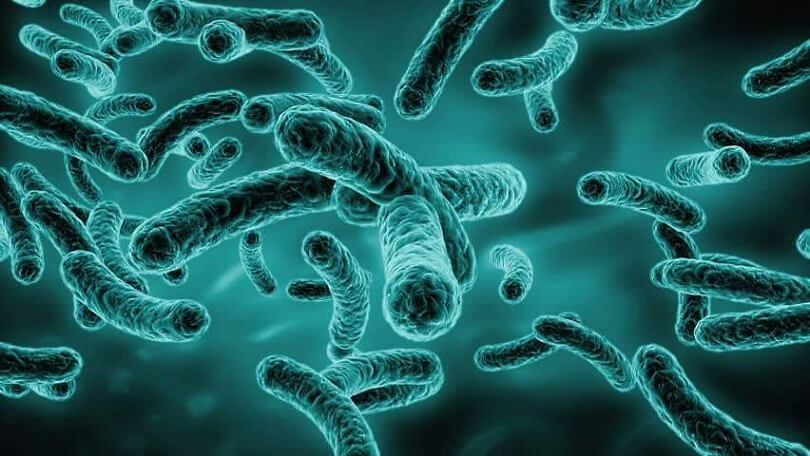Bacteria are a sort of cell in nature. Bacteria is a major group of prokaryotic microorganisms. These single-celled creatures may grow in a variety of settings. They can be found practically everywhere, from soil to rivers to the ocean, and even in human waste.
There are many different kinds of germs on our planet. Some are toxic to us, while others might be very beneficial to our survival. The classification of bacteria is based on the characteristics of the cell walls and forms of the organisms. As far as genetic classification goes, it isn’t widely used.
There are two varieties of prokaryotes that fall under the same family, depending on their genetic composition. Those are the Archaea and Eubacteria, respectively.
Archaea Vs. Eubacteria
The kingdom of Monera includes Archaea and Eubacteria. Archaea is a single-celled bacterium that survives in harsh environments, while Eubacteria are organisms that flourish in a more typical environment. Archaebacteria is the earliest bacterium ever discovered on Earth.
What is Archaea, and why is it important?
In severe environments, single-celled microbes called archaea may survive and flourish. They may be found in a variety of locations, including the deep ocean, salt brine, and volcanic eruption sites. They are prokaryotes from the Monera Kingdom. Archaea are often referred to as “extremophiles” as well.
Archaea come in a variety of forms and sizes. Several are flat and square-shaped, while others are spirals, rods, plates, and spheres in various sizes and forms. It is pseudopeptidoglycan that makes up the cell wall of archaeans. Lipids in Archaea have been shown to be connected to ether through branching aliphatic acid in the organism.
Archaea’s reproductive system is based on asexual reproduction. Binary fission, budding, or fragmentation are all methods used in asexual reproduction Currently, we know of three distinct forms of Archaea. Methanogens, Thermophiles, and Halophiles make up the majority of them. It’s true that the archaea aren’t harmful to humans.
Methanogens, which produce methane from carbon dioxide and bacterial waste, are often employed in wastewater treatment. Thermophiles and halophiles, on the other hand, have a role to play in society.
Archaea’s exterior cellular layer, known as the membrane, is critical. Their ability to operate as a barrier between the inside of the cell and the outside world is what allows them to flourish in such harsh environments.
What does Eubacteria mean?
Eukaryotic bacteria are single-celled, highly sophisticated microbes that may thrive in a variety of natural habitats, including soil and water. Like the soil, water, living and nonliving species, they can be found almost everywhere on Earth.
Prokaryotes, like Eubacteria, are also members of the Monera kingdom. Similarly, Eubacteria are also known as bacteria. There is no nucleus and some membrane organelles in Eubacteria. Consequently, all activities are carried out in the cytoplasm of the cell.
Peptidoglycan is the primary structural component of the eubacteria cell wall. Fatty acids and eubacteria are linked through ester bonds. Eubacteria may be spherical, rod-shaped, cocci-shaped, or spiral-shaped. An envelope protects and controls the movement of materials around the bacterium.
Both sexes are involved in the reproduction process. They are able to reproduce under even the most difficult of circumstances.
Humans may be infected by eubacteria, which are also diseases. As a result, there exist non-pathogenic eubacteria as well.
Eubacteria may be divided into two categories. Eubacteria may be divided into two groups: the Gram-positive and the Gram-negative. Gracylation and Kreb’s cycle are two pathways used by Eubacteria to manufacture energy. While introns are lacking from Eubacteria’s tRNA, Thymine is.
Difference Between Archaea and Eubacteria
- Both Archaea and Eubacteria are members of the Monera Kingdom, yet there are significant differences between the two. Archaea can only be found in the most severe environments, but Eubacteria may be found practically wherever.
- A binary fission, fragmentation, and budding mechanism is used by Archaea to reproduce asexually, whereas Eubacteria may reproduce both asexually and sexually.
- There are no pathogens in Archebacteria while Eubacteria include both pathogen and non-pathogen bacteria.
- Pseudopeptidoglycan makes comprises the cell wall of Archaea, which also has ether bonds with aliphatic acid, but the lipid membrane ester linkages of eubacteria contain a fatty acid lipid ester.
- In contrast to Eubacteria, which uses glycolysis and Kreb’s cycle to break down glucose and create energy, Archaea uses a different metabolic process.
Conclusion
Single-celled microbes Archaea and Eubacteria share several morphological characteristics. However, there are numerous more differences between them.
Their cell membrane and nucleus are absent as a prokaryote. Having both kinds of germs on hand is very beneficial to the human race. Archaea and eubacteria both have a lot to offer humanity.
For both biogas generation and sewage water treatment, methanogens are often used. Eubacteria aids digestion and may be used in the production of curd or yogurt.
Certain illnesses may be prevented by the eubacteria. Without Archaea and Eubacteria, humans would not be able to thrive on this planet.

